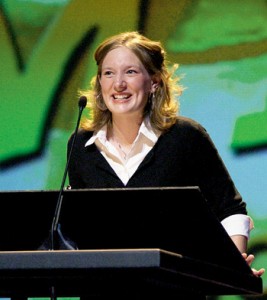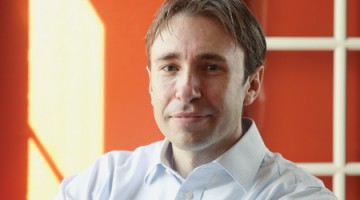
EDITOR’S NOTE:The annual George H. Brimhall Memorial Essay Contest honors a BYU founder as part of Homecoming. Melissa Draper, ’05, a chemistry major from Chanhassen, Minn., won first prize in the 2004 contest and received $1,000 for her essay, printed here, which she read at Homecoming opening ceremonies.
Also winning awards were (second place) Brittany Jones, ’06, an English graduate student from Farmington, Utah, and (third place) Elizabeth Luker Ellis, ’05, an English major from Salt Lake City. Lisa Ann Fraser, ’05, an English major from Centerville, Utah, and Steven J. Pearson, ’06, a linguistics major from Glendale, Calif., received honorable mentions.
The theme for Homecoming 2003 was “Firm in the Fire,” and the honored founder was former BYU professor Edwin S. Hinckley.
Because protons carry energy hv, where the h is the Planck constant . . .” I shook my head in frustration. Will all this stuff really be on the test? Nobody had said the gift of tongues was a prerequisite for second-semester freshman chemistry. Nervously I glanced around the dim auditorium. Was I the only person who had gotten lost back when the professor started using words like octahedral complexes and t2g orbitals? I sighed. Everyone else seemed to be eagerly jotting notes, heads bobbing in silent consent to the professor’s explanations. Biting my lip, I focused again on the front of the room.
“Please help me figure this out,” I prayed silently, as I squinted up at the diagram on the screen. Suddenly I jerked my head and stared at the professor. Something about what he was saying made sense. Turning to a new page in my notebook, I began scribbling frantically, fragments of homework problems and reading assignments slowly sliding together. I could see it! “Wow,” I muttered under my breath. The metallic model taking shape on my paper seemed not only logical but elegant, and I caught myself wondering what engineer had devised such a perfect design. I nearly laughed as I realized the answer to my own question. No mortal had crafted the intricate assembly of a molecule: we were not studying the mere handiwork of men but tackling divine artwork. At that moment I knew I wanted to be a chemist.
Early 20th-century BYU professor and administrator Edwin S. Hinckley must have left the same impression on his students, one of whom later remarked, “The great power of his teaching was not just the science that he knew and gave out to us. It was the inspiration that came from it that created lasting desires to see the Creator in His creations, and feel that calm contentment and that thrill and beauty that nature can give us.” In classes ranging from botany and entomology to geology and animal husbandry, Brother Hinckley instilled in others a profound awe of the Lord’s handiwork and a conviction, like Alma’s, that “all things denote there is a God; yea, even the earth, and all things that are upon the face of it” (Alma 30:44).
My brief epiphany that afternoon in the chemistry lecture hall was quickly encored by new discoveries, and I remember one chapter in particular from that same semester: the one on steel.
Steel. Images of suspension bridges and bathroom fixtures flooded my mind as I copied the equations scrawled across the blackboard. Someone nearby stifled a yawn. I wonder if Brother Hinckley, who assisted in bringing the Columbia Steel Plant to central Utah, would have been disappointed as a voice from the back of the lecture hall whined, “Will all those equations be on the test?”
I glanced at my textbook. One page showcased a lump of hematite, its surface mottled with uneven black bubbles. How could such an unattractive rock become strong, shiny steel? I wondered. I looked back at the chalkboard as the professor began describing a blast furnace. “Through exposure to temperatures above 1,000 degrees Fahrenheit,” he explained, “pure iron is separated from contamination.” I tried to imagine vats of glowing hot metal and shuddered. “But,” he continued, “simply eliminating impurities is insufficient. Additional valuable components, such as carbon, must be carefully incorporated into the metal to create the alloy’s characteristic strength.”
Suddenly the lecture wasn’t about alloys anymore. Even as a second semester freshman, the parallel between what the professor was saying and the rough experiences in my own life was easy to see. It’s a concept exemplified by many of BYU’s founders, including Brother Hinckley, who lived a life of faithfulness and excellence in an era of difficult growth and progress. Like Edwin Hinckley, we will each at some point face the refiner’s forge, and we each have a responsibility to be firm in those fires. More than merely enduring, however, we need to be continually adding valuable experiences and knowledge, the fortifying carbon in the molten mixture of mortality.
The bell rang. Spiral notebooks disappeared into backpacks and the pleasant hum of chatter immediately filled the room. Slowly I closed my textbook, lingering on the image of hematite. Will this be on the test? I wondered.
I nearly laughed as I realized the answer to my own question. Being firm in the fire won’t be on the test. It will be the test.









